How to Make Michelin Star Rated Mashed Potatoes
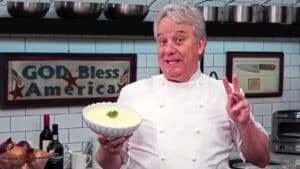
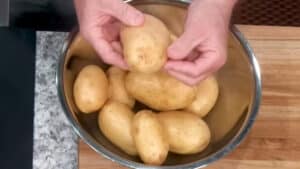
The Roots of These Michelin Star Mashed Potatoes
I learned this luxurious mashed potatoes recipe in the kitchen of L’Oustau de Baumaniere in Provence, one of the world’s best restaurants with a 3-star Michelin rating, Southern France. This is where I first learned the ropes of classic French cooking. Back then we used primarily Ratte potatoes for their creamy texture and buttery taste, today I am using the US equivalent Yukon Gold Potatoes. This amazing mashed potato dish is elevated by a technique that involves cooking the potatoes with their skins on in salted water. This method prevents water absorption and allows for the infusion of milk and a generous amount of butter later in the process, creating a rich, velvety finish.
Serving and Pairing Michelin Star Mashed Potatoes
Mashed potatoes of this caliber deserve a presentation and pairing that complements their elegance. Serve them warm, ideally as a side dish that can elevate any main course from great to extraordinary. They pair exceptionally well with robust dishes like roasted meats—think a perfectly cooked ribeye or a tender rack of lamb. Alternatively, they can be a star accompaniment to more delicate dishes like grilled salmon or a vegetarian wellington, adding a luxurious texture and rich flavor to the meal.
Ideal Mashed Potatoes Pairing
Aside from main dishes, these mashed potatoes go beautifully with Green Beans Almandine or a simple arugula salad dressed in a light Vinaigrette Dressing, balancing the richness with a touch of freshness. For wine enthusiasts, a glass of Chardonnay or a smooth Merlot complements the creamy texture of the potatoes wonderfully, rounding out an exquisite dining experience.
Pro Tips for Perfect Mashed Potatoes
Achieving the perfect texture and flavor balance in mashed potatoes requires attention to detail. First, always choose the right type of potato; Yukon Golds are my top recommendation for their flavor and consistency. Remember, boiling them in their skins with plenty of salt not only seasons them but also protects them from water saturation. When it comes to mashing, never use a blender or food processor as it can make your potatoes gummy. Instead, pass them through a potato ricer for that ideal smoothness.
Bonus Pro Tip
For an extraordinary finish, after ricing your potatoes, pass them through a fine mesh sieve or tamis to achieve an even silkier texture. This extra step enhances the luxurious mouthfeel that makes Michelin Star Mashed Potatoes so special. When incorporating butter, ensure it’s at room temperature to seamlessly blend into the warm potatoes, avoiding any lumps and achieving a rich, homogeneous consistency. By following these steps, you’re not just making mashed potatoes—you’re crafting an experience that will linger in your guests’ memories, much like it has in mine from my early days in France. Enjoy the process and the delicious results!
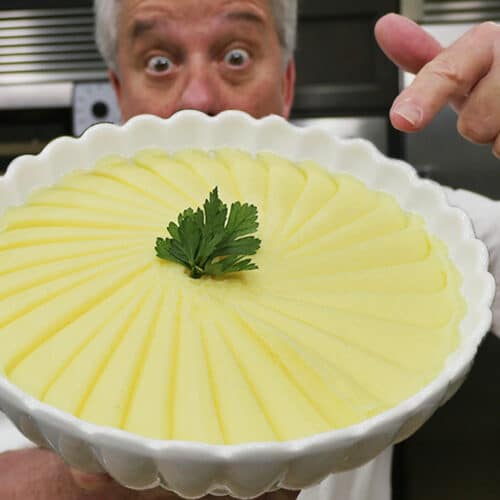
3 Michelin Star Mashed Potatoes Recipe
Recipe Video
Recipe Ingredients
- 3 pounds Yukon Gold Potatoes
- Salt, to taste
- 1 cup Hot Milk
- 3/4 pound Unsalted Butter, at room temperature
Recipe Instructions
- Begin by preparing the Yukon Gold potatoes. Place them in a large pot of cold water, ensuring they are fully submerged. Generously salt the water and bring it to a boil. Cook the potatoes until tender when pierced with a toothpick, ensuring they are fully cooked through.
- Once the potatoes are cooked, carefully drain them and allow them to cool slightly for easier handling. Peel the potatoes, removing all skin.
- Using a potato ricer, process the peeled potatoes until smooth and lump-free. This step is crucial for achieving the desired silky texture of the mashed potatoes.
- Now, it's time to enhance the creaminess of the mashed potatoes. Gradually pour hot milk into the mashed potatoes, stirring gently to incorporate. Be cautious not to add too much milk; the goal is to make the potatoes slightly more pliable without making them too liquid.
- For the final step in achieving Michelin-worthy mashed potatoes, pass the mixture through a tamis or fine mesh strainer. This additional step ensures an impeccably smooth texture, elevating the dish to fine dining status.
- Once the potatoes are velvety smooth, it's time to add butter. Incorporate room temperature butter into the mashed potatoes, folding it in gently until fully combined. The butter adds richness and decadence to the dish, creating a luxurious finish. Taste the mashed potatoes and adjust seasoning with salt if needed, ensuring they are perfectly seasoned.
- Indulge in the divine creaminess of these Three Michelin Star Mashed Potatoes, a true masterpiece of culinary excellence. Bon appétit!
You can find the items below used in making this dish at our online store!
Private Notes
Frequently Asked Questions About How to Cook Mashed Potatoes
1. What are the best potatoes for making mashed potatoes?
Yukon Gold potatoes are highly recommended for making mashed potatoes due to their creamy texture and buttery flavor. They have the right amount of starch to hold together during cooking while still breaking down into that perfect creamy consistency when mashed. Another good option is the Russet potato, which is fluffier and absorbs flavors like butter and cream very well.
 
2. How should I prepare the potatoes for cooking?
Begin by thoroughly washing the potatoes. If you prefer a smoother texture, peel the potatoes before boiling; however, for added nutrients and texture, you can leave the skins on. Cut the potatoes into even chunks to ensure they cook uniformly. Starting with cold water, add the potatoes to the pot, then bring it to a boil. This helps cook the potatoes evenly and prevents the outsides from breaking down before the insides are fully cooked.
 
3. How much salt should I add to the water when boiling potatoes for mashing?
It’s important to generously salt the water in which the potatoes will boil. This is your best chance to season the potatoes themselves, and it can greatly enhance their flavor. As a guideline, add about one tablespoon of salt for every gallon of water.
 
4. What is the secret to getting creamy mashed potatoes?
The secret to creamy mashed potatoes lies in the right combination of butter and warm milk or cream. Add these ingredients slowly to your cooked, drained potatoes and mash until you reach the desired consistency. The key is to use enough dairy to make the potatoes creamy but not so much that they become runny. Additionally, using a potato ricer or masher can help achieve a smooth, lump-free texture.
 
5. Can I make mashed potatoes ahead of time?
Yes, mashed potatoes can be made ahead of time. After preparing them, cool them quickly and store them in the refrigerator. When ready to serve, reheat them gently over low heat on the stove or in the oven. You may need to add a bit more milk or butter to restore the original creamy texture.
 
6. What can I add to mashed potatoes to make them more flavorful?
Beyond the traditional butter and cream, consider incorporating garlic, herbs like rosemary or thyme, or cheese such as Parmesan or cheddar for added flavor. For a deeper taste, caramelized onions or a spoonful of pesto can be mixed into the mashed potatoes as well.
 
7. How do I avoid gummy mashed potatoes?
To avoid gummy mashed potatoes, be careful not to overwork them. Over mashing or using a food processor can break down the starches too much and result in a paste-like consistency. Instead, use a potato masher or ricer for the best texture.
 
8. What is the best tool to use for mashing potatoes?
A potato ricer is generally considered the best tool for making smooth mashed potatoes. It presses the potatoes into small, fine pieces, making it easier to incorporate butter and milk without overworking the mixture. A hand masher is a good second choice, particularly for those who prefer a slightly chunkier texture.
 
9. Can I use a blender or food processor to make mashed potatoes?
It’s not recommended to use a blender or food processor for mashing potatoes as these tools can easily overwork the potatoes, causing them to become sticky and gummy. Stick to a hand masher or potato ricer for the best results.
 
10. How long should I boil potatoes for mashing?
Boil the potatoes until they are completely tender and fall apart easily when pierced with a fork. This typically takes about 15-20 minutes after the water has started boiling, depending on the size of the potato chunks.
 
11. Should I rinse the potatoes after boiling them for mashed potatoes?
There is no need to rinse the potatoes after boiling; you want to retain some of the starches that help make the mashed potatoes creamy. Just drain them well and proceed with mashing.
 
12. Can I add sour cream to my mashed potatoes?
Yes, sour cream can be added to mashed potatoes to give them a rich, tangy flavor and creamy texture. It works particularly well with additional mix-ins like chives or green onions.
 
13. How can I keep mashed potatoes warm if they are made in advance?
Mashed potatoes can be kept warm in a slow cooker set on low or in a covered dish in a warm oven. Stir occasionally and add a bit of cream or butter if they start to dry out.
 
14. What are some creative ways to serve mashed potatoes?
For a visually appealing presentation, you can pipe the mashed potatoes onto plates using a pastry bag fitted with a large star tip. You can also serve them in individual ramekins topped with a pat of butter or a sprinkle of herbs for a special touch.
- Exquisite Chicken Oscar Recipe: A Royal Treat - May 16, 2024
- The Ultimate Tartiflette Recipe: “The Overloaded Potato” - May 13, 2024
- Sensational Chilean Sea Bass Recipe With A Red Wine Sauce - May 9, 2024

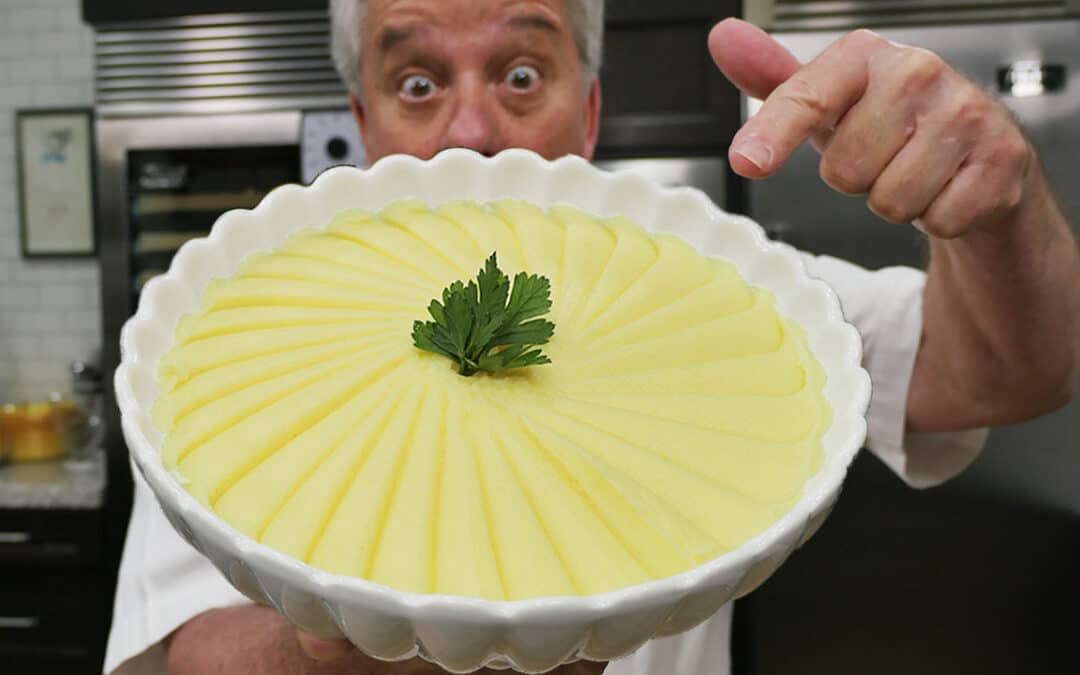

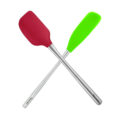
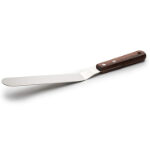

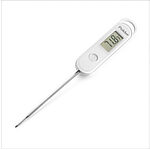

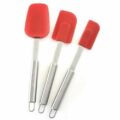
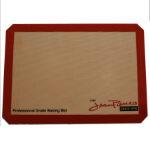

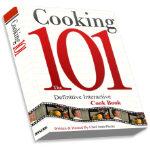
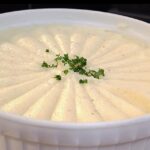

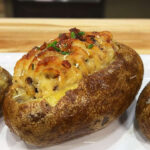

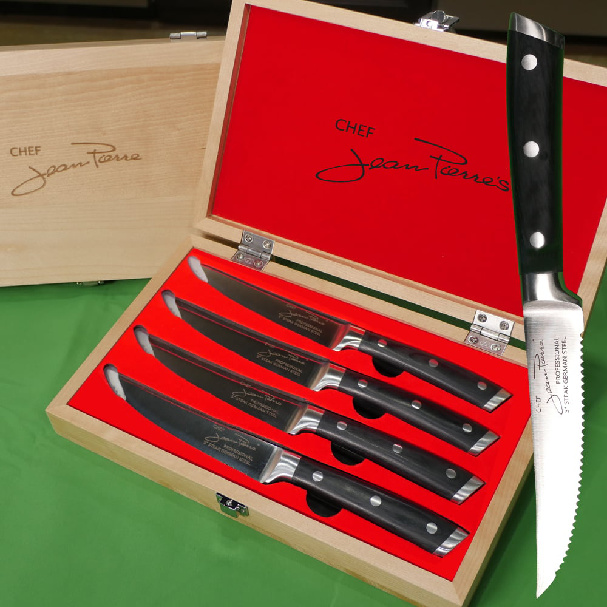
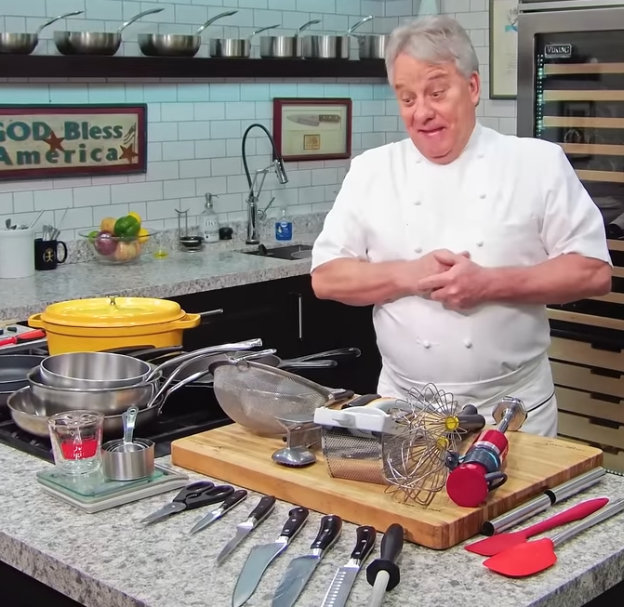
PS I’ve never made/boiled potatoes with the skin on to make mashed potatoes???
OK I get why you did that now……
Love You stay strong and funny!!! 🙂
Hi CHEF OMG I love mash potatoes!! I just had to watch this…..BTW your number ONE FAN in Connecticut here
I have a friend that always makes turnips on thanksgiving and she always used a pound of butter for 1 large turnip! They were delicious!!! Its not like we eat the whole sticks a butter in one mouthful. They are delicious!!
I do make mash potatoes frequently and I only use one stick and cold milk
Not sure about that strainer thing….You just keep doing what you are doing and SLOW DOWN! We WANT AND NEED YOU AROUND TO TEACH/SHOW US
BTW I know you are done with soups for now, but I was hoping you could do a beef barley soup. I can’t make soup for the life of me….it comes out like stew. I want soup…
I love what you do so keep on doing it!!! Your my food hero of elegance